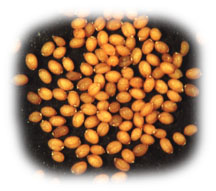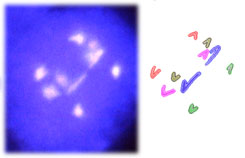
This page was produced as part of an undergraduate seminar at Davidson College.
About Arabidopsis:
Arabidopsis Thaliana, otherwise known as thale cress, is a hearty flowering weed that frequents walking paths and terraces. It belongs to the Brassicaceae (mustard) family along with crop plants such as radish or, more importantly, cabbage (TAIR, 2004). It was discovered in the 16th century by Johannes Thal, and though he gave the unassuming weed a different name, it kept part of his last name (TAIR, 2004). It is currently used in genetic laboratories everywhere as the primary model organism for plants. A model organism is one that is studied because it is particularly easy to study its biological phenomena in a lab setting. It was first described and assessed as a model organism by Laibach in 1943 (TAIR, 2004). Laibach was also the first to state and correctly identify thale cress’s 5 chromosomes (TAIR, 2004). There are 750+ known natural varieties of Arabidopsis Thaliana, which are harvested and assessed for genetic differences (TAIR, 2004).
Arabidopsis in Recent News:
Perhaps the most stunning development in the history of Arabidopsis was the complete sequencing of its small genome in December of 2000. This 70 million dollar sequencing effort (BBC, 2000) became an international endeavor in 1996 with the founding of the Arabidopsis Genome Initiative (An Sun, 2000). The genome of Arabidopsis is only about 115 million base pairs long with approximately 26,000 genes on 5 chromosomes (An Sun, 2000).

The Genome of Arabidopsis (TAIR, 2004) *permission pending*
This development was echoed in the popular press with headlines such as “Little weed in science landmark” (BBC, 2000). It was found that 58% of its genome is quite redundant, the product of a genome duplication 110 million years ago (An Sun, 2000). Arabidopsis’s complete genomic sequencing is perhaps most significant because genes are more easily defined experimentally when their presence and genomic location are known. Subsequently, once a gene is defined then it or homologues can be sought out in other species and applied for a greater purpose. A perfect example of the application of a gene discovery in Arabidopsis to a larger purpose is the end focus of this site, “super cabbage.”
Why use Arabidopsis in the first place in the lab?
- Arabidopsis is quite similar to crop plants and behaves similarly under experimental pressures (NSF 2010, 2004). The benefits of this are obvious as cash crops are not consumed in experimental processes and analysis of a simple weed can have macroscale applications.
- Arabidopsis produces thousands of seed pods per plant (NSF 2010, 2004). The sheer multitude of seeds makes further progeny analysis more accurate through sheer statistics.

Enlarged view of Arabidopsis seed pods (Comai Lab, 2004)
- Arabidopsis can self-fertilize and can be cross-pollinated (NSF 2010, 2004).
- Arabidopsis has few chromosomes, making recessive trait analysis a non-issue (NSF 2010, 2004). Its small genome makes it much easier to identify mutations and to evaluate the genomic response to experimental stimuli.

Chromosomes of Arabidopsis in anaphase with pairs indicated on right (Comai Lab, 2004)
- Arabidopsis is easily transformed through Agrobacterium tumefaciens or standard mutagens (NSF 2010, 2004).
- Arabidopsis has a 6 week life cycle from germination to mature seed (TAIR, 2004). Its short life cycle reduces experimental downtime and makes genetic analysis much easier. A detailed view of its life cycle can be seen by following this link to The Arabidopsis Information Resource.
- There are a massive amount of available mutant species and genomic resources for Arabidopsis as well as an international research effort (TAIR, 2004). A list of the many stock centers that compile different variations of Arabidopsis can be seen by following this link to The Arabidopsis Information Resource.
- The plants are very small (roughly 20 cm) and physically easy to grow (TAIR, 2004).
So...
Thus, we see the solid and powerful base that Arabidopsis provides in genetic exploration. It is no surprise, then, that nearly every phenotype of this crucial weed is investigated for further insights into the mechanics of life. Next, we briefly explore the mechanism of flowering control and its importance in the life of Arabidopsis. It is from this mechanism that scientists in Korea would draw the necessary conclusions to postulate a mechanism by which to create "Super Cabbage."
Return to the Genetically Modified Organisms Seminar Homepage
Return to the Biology Department at Davidson College
Return to the Davidson College Homepage
Questions? Comments? Suggestions? Email Matt Talbert ('05) by clicking here.